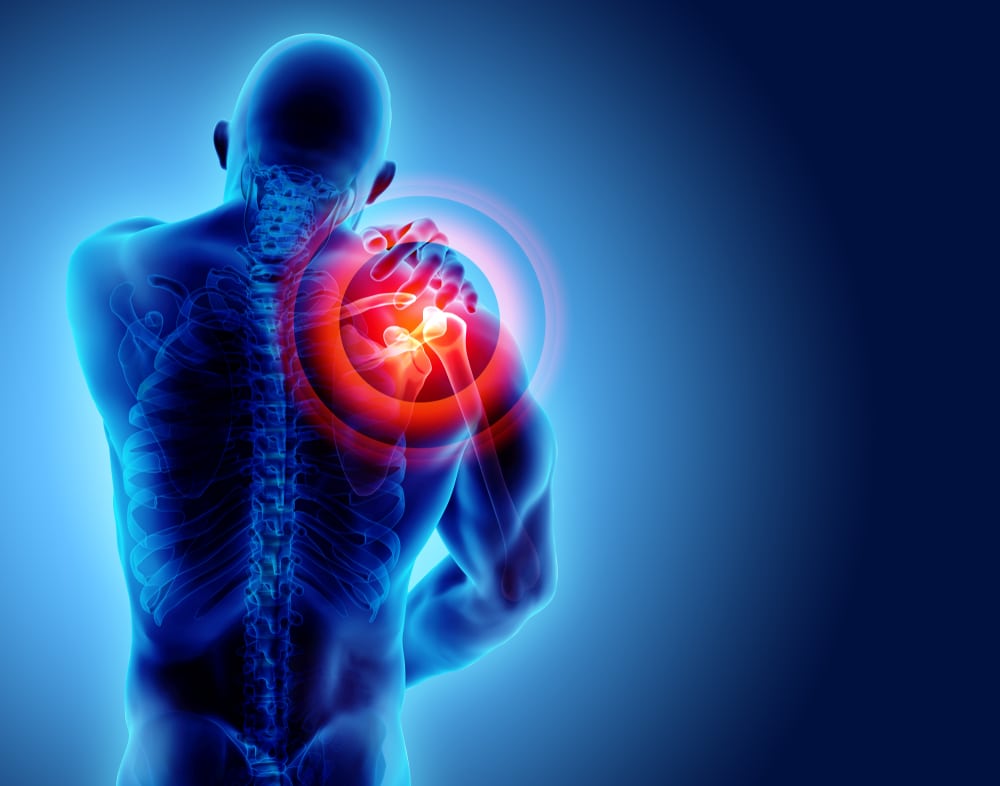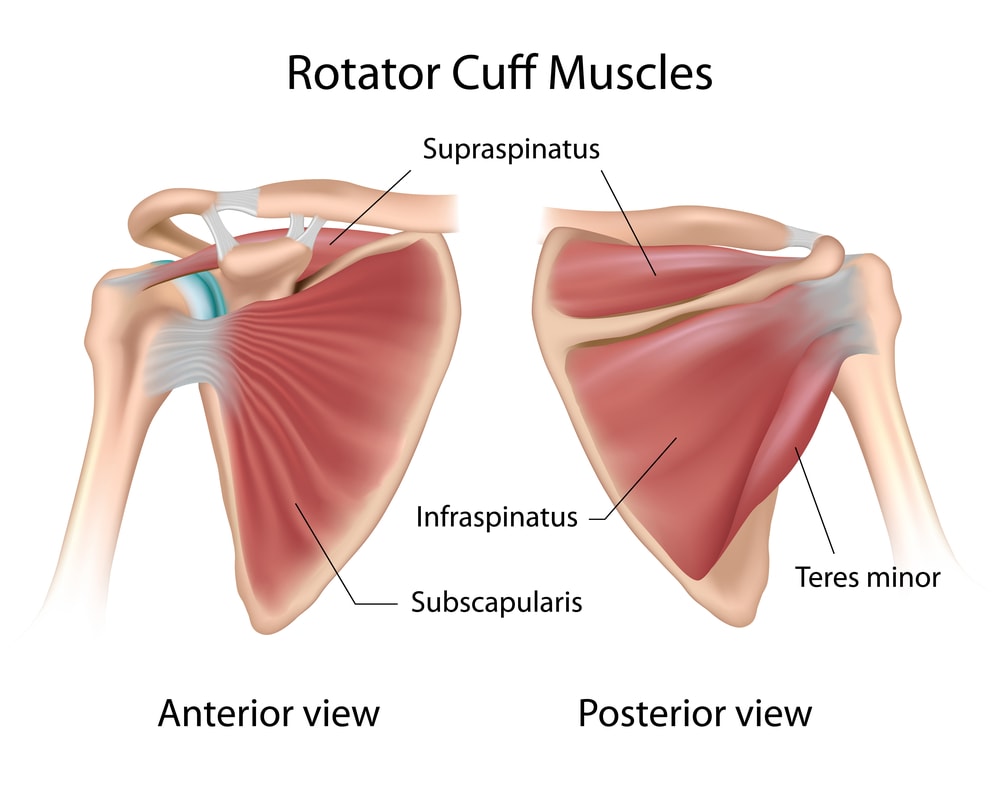How Often Are Rotator Cuff Tears Asymptomatic?

Credit: Shutterstock
Your shoulder begins to hurt, and your doctor orders an MRI that shows tears in the rotator cuff. This is definitely causing your shoulder pain, right? Not necessarily. Let’s dig in.
The Rotator Cuff

Credit: Shutterstock
Your shoulder has muscles and tendons that surround the shoulder joint called the rotator cuff. These are the supraspinatus, infraspinatus, subscapularis, and teres minor. These muscles help to move and stabilize your shoulder. These tendons can be torn, and that injury is called a rotator cuff tear.
These tears happen more often in older patients, usually in their 50s-70s. Tears can occur with trauma or just happen because of wear and tear. The pain is generally felt in the shoulder, and using that joint causes pain.
A Common Scenario
A very common clinical scenario is a 55-year-old patient who starts noticing shoulder pain while sleeping or being active. There isn’t any specific trauma, but the patient is given a steroid shot in the shoulder to help the pain. That deadens the pain for a few weeks, so this patient is sent to physical therapy. Since that doesn’t help much, an MRI is ordered that shows a rotator cuff tear, and the patient is sent for rotator cuff surgery.
A reasonable question to ask is whether that rotator cuff tear was there before the symptoms started, and hence it has nothing to do with why the shoulder hurts. Meaning the diagnosis that the rotator cuff tear is causing the patient’s pain is inaccurate. Let’s review a recent study to determine how frequent asymptomatic rotator cuff tears are in people walking around without shoulder pain.
The Research
This blog began because I happened on a 2013 study performed in Japan. Researchers performed ultrasound examinations on 664 patients in a small village as part of a health check-up. 22% of the patients had full-thickness rotator cuff tears, and this prevalence increased with age:
- 20s-40s-0%
- 50s-11%
- 60s-15%
- 70s-27%
- 80s-37%
Here’s the thing, half of these tears produced NO SYMPTOMS. Has this type of research finding been replicated? Yep.
A 2018 California study showed that of 23 little league baseball players who reported no shoulder problems, 52% of the players had MRI findings that weren’t present in the non-dominant shoulder (2). These findings included partial rotator cuff tears, bursal swelling, labral tears, and bone cysts. A 2016 study performed in Florida looked at 53 patients who were middle-aged with no shoulder problems and found 55-72% of the group had labral tears (the lip around the shoulder socket) (3). Another baseball study of draft picks used high-field 3T MRI and imaged 19 players with no shoulder pain (4). 68%, 32%, and 21% of the players showed tendinopathy, partial-thickness rotator cuff tears, and AC joint arthritis.
Maybe these MRIs are just catching these patients before they show symptoms? A 2013 study of 50 patients in Norway found that 32% of these asymptomatic patients developed symptoms during a 3-year follow-up (5). However, we need to be careful here as these patients knew they were being followed in a shoulder study. Meaning, this may have biased the results.
Are specific characteristics on the MRI more often associated with painful tears? Yes, it seems like fatty degeneration of the rotator cuff muscles and larger tear size (over an inch or 3 cm) are more commonly associated with being symptomatic (6). However, this is a single small study.
The upshot? This research shows that you need to be very careful about signing up for surgery if you have a rotator cuff tear or other shoulder pathology. There’s only a 50/50 chance that what is seen on your MRI is causing your pain. That’s why we’re so big on minimally invasive injection-based care using orthobiologics.
__________________________________________________
References:
(1) Minagawa H, Yamamoto N, Abe H, et al. Prevalence of symptomatic and asymptomatic rotator cuff tears in the general population: From mass-screening in one village. J Orthop. 2013;10(1):8-12. Published 2013 Feb 26. doi:10.1016/j.jor.2013.01.008
(2) Pennock AT, Dwek J, Levy E, Stearns P, Manning J, Dennis MM, Davis-Juarez A, Bastrom T, Taylor KS. Shoulder MRI Abnormalities in Asymptomatic Little League Baseball Players. Orthop J Sports Med. 2018 Feb 23;6(2):2325967118756825. doi: 10.1177/2325967118756825. PMID: 29511703; PMCID: PMC5826014.
(3) Schwartzberg R, Reuss BL, Burkhart BG, Butterfield M, Wu JY, McLean KW. High Prevalence of Superior Labral Tears Diagnosed by MRI in Middle-Aged Patients With Asymptomatic Shoulders. Orthop J Sports Med. 2016 Jan 5;4(1):2325967115623212. doi: 10.1177/2325967115623212. PMID: 26779556; PMCID: PMC4710128.
(4) Del Grande F, Aro M, Jalali Farahani S, Cosgarea A, Wilckens J, Carrino JA. High-Resolution 3-T Magnetic Resonance Imaging of the Shoulder in Nonsymptomatic Professional Baseball Pitcher Draft Picks. J Comput Assist Tomogr. 2016 Jan-Feb;40(1):118-25. doi: 10.1097/RCT.0000000000000327. PMID: 26529676.
(5) Moosmayer S, Tariq R, Stiris M, Smith HJ. The natural history of asymptomatic rotator cuff tears: a three-year follow-up of fifty cases. J Bone Joint Surg Am. 2013 Jul 17;95(14):1249-55. doi: 10.2106/JBJS.L.00185. PMID: 23864172.
(6) Moosmayer S, Tariq R, Stiris MG, Smith HJ. MRI of symptomatic and asymptomatic full-thickness rotator cuff tears. A comparison of findings in 100 subjects. Acta Orthop. 2010;81(3):361-366. doi:10.3109/17453674.2010.483993

If you have questions or comments about this blog post, please email us at [email protected]
NOTE: This blog post provides general information to help the reader better understand regenerative medicine, musculoskeletal health, and related subjects. All content provided in this blog, website, or any linked materials, including text, graphics, images, patient profiles, outcomes, and information, are not intended and should not be considered or used as a substitute for medical advice, diagnosis, or treatment. Please always consult with a professional and certified healthcare provider to discuss if a treatment is right for you.
